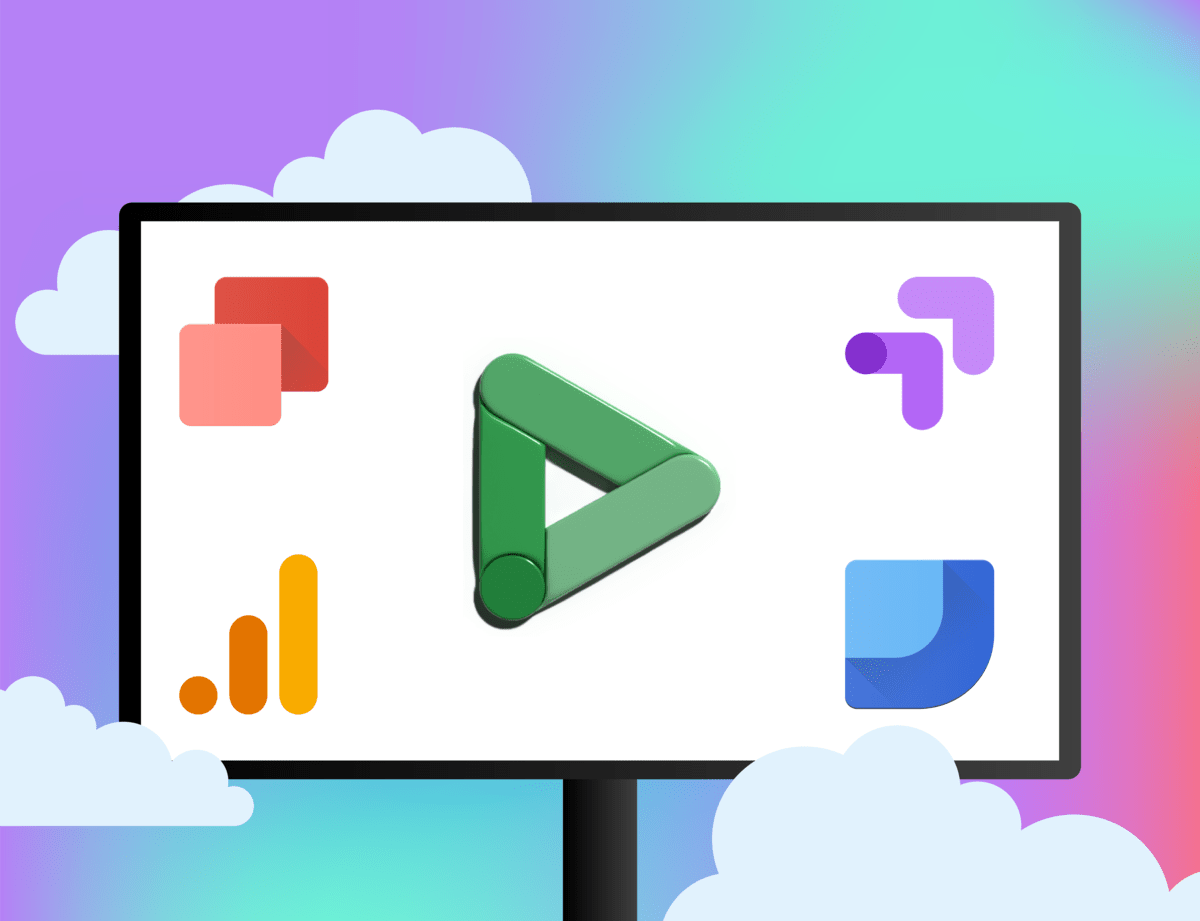What Are Demand-Side Platforms?
A DSP is a software system that allows advertisers to buy digital ads and audience data using automation. It aggregates inventory from multiple ad exchanges and supply-side platforms (SSPs), providing advertisers with access to a wide range of ad inventory across various websites, apps, and devices across multiple media channels.
Why Are Demand-Side Platforms Important?
DSPs help advertisers maximize their reach and ROI in a complex digital advertising ecosystem by automating the buying process, providing advanced targeting and data integration capabilities, and offering robust analytics.
Some of a DSP’s functions include:
-
- Automated media buying, which eliminates the need for manual negotiations and insertion orders, streamlining the buying process and allowing for efficient, real-time transactions.
- Real-time bidding: when a user visits a webpage, an auction occurs almost instantaneously, and the highest bidder gets to display their ad.
- Audience targeting based on demographics, geographic location, interests, browsing behavior, and more. This helps advertisers reach the most relevant audience for their campaigns.
- Data integration and use, which allow advertisers to integrate their own first-party data with third-party data provided by data management platforms (DMPs) through DSPs to create more precise audience segments and targeting strategies.
- Cross-device and multichannel reach: DSPs provide access to a variety of ad formats (display, video, mobile, social, native, etc.) and support cross-device campaigns.
- Performance tracking and analytics: Advertisers can track the performance of their campaigns in real-time, allowing them to measure key metrics such as impressions, clicks, conversions, and ROI so they can optimize campaigns and make data-driven decisions.
- Cost efficiency: Advertisers can set budgets, bid prices, and pacing controls to maximize their ad spend.
- Creative management tools let you build, test, and optimize ad creatives directly within the platform.
- Fraud prevention and brand safety: DSPs incorporate tools and partnerships with third-party vendors to protect against ad fraud and ensure brand safety, like filtering out invalid traffic and only displaying ads in appropriate and brand-safe environments.
What Are the Best DSP Platforms?
Here at Grapeseed Media, we are platform-agnostic—that means we don’t uphold one particular DSP over another.
Instead, we use the best DSP on a campaign-by-campaign basis to meet each client’s unique needs. That said, there are some tried-and-tested favorites, nine of which we’ve listed below.
Four of them (The Trade Desk, Google DV360, Adform, and Adobe) are considered leaders in the DSP sector, which is projected to grow from $25.54 billion in 2023 to $114.51 billion by 2030.
For each platform, we cover the pros, cons, use cases, and ways to increase coverage.
1. Amazon DSP
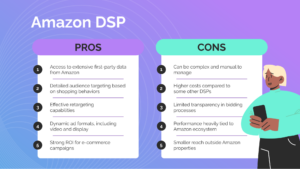
Best for: Amazon DSP excels in e-commerce campaigns, particularly for brands looking to leverage Amazon’s vast shopper data.
As you might expect, Amazon DSP works well for all types of campaigns, including awareness, consideration, conversion, retargeting, dynamic, and cross-platform campaigns.
However, where it really excels is in campaigns for products sold on Amazon, as it allows for more granular and in-depth reporting metrics.
Pros:
- Access to extensive first-party data from Amazon.
- Detailed audience targeting based on shopping behaviors.
- Effective retargeting capabilities.
- Dynamic ad formats, including video and display.
- Strong ROI for e-commerce campaigns.
Cons:
- Can be complex and manual to manage, with limitations on ads run outside of Amazon owned and operated properties.
- Higher costs compared to some other DSPs.
- Limited transparency in bidding processes.
- Performance heavily tied to Amazon ecosystem.
- Smaller reach outside Amazon properties.
Ways to increase coverage:
- Use Amazon’s ready-made audience segments and lookalike audiences.
- Expand product and category targeting.
- Leverage cross-device and cross-platform ad placements.
- Incorporate more ad formats like video.
- Increase budget and adjust frequency caps.
2. Facebook Ads
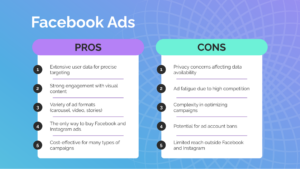
Best for: Facebook Ads are ideal for social media engagement and brand awareness campaigns. They work well for promoting lifestyle products, events, and local services where visual engagement is key.
Pros:
- Extensive user data for precise targeting.
- Strong engagement with visual content.
- Variety of ad formats (carousel, video, stories).
- The only way to buy Facebook and Instagram ads.
- Cost-effective for many types of campaigns.
Cons:
- Privacy concerns affecting data availability.
- Ad fatigue due to high competition.
- Complexity in optimizing campaigns.
- Potential for ad account bans.
- Limited reach outside Facebook and Instagram.
Ways to increase coverage:
- Use broad audience targeting and Facebook’s lookalike audiences.
- Experiment with different ad placements (feed, stories, in-stream).
- Leverage video and interactive ad formats.
- Increase ad frequency and budget.
- Utilize Instagram and Facebook Messenger placements.
3. Google Display and Video 360 (DV360)
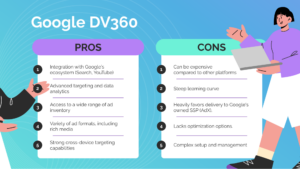
Best for: DV360 is excellent for comprehensive digital marketing campaigns, combining display, video, and rich media ads. It’s ideal for brand awareness, product launches, and multi-channel campaigns that integrate search and video advertising.
Pros:
- Integration with Google’s ecosystem (Search, YouTube).
- Advanced targeting and data analytics.
- Access to a wide range of ad inventory.
- Variety of ad formats, including rich media.
- Strong cross-device targeting capabilities.
Cons:
- Can be expensive and support documentation is cumbersome.
- Steep learning curve.
- Heavily favors delivery to Google’s owned SSP (AdX).
- Lacks optimization options.
- Complex setup and management.
Ways to increase coverage:
- Broaden audience segments and geo-targeting.
- Utilize YouTube and rich media ad formats.
- Increase bids and overall budget.
- Use cross-device targeting to reach more users.
- Leverage Google’s data and insights for better optimization.
4. The Trade Desk

Best for: The Trade Desk is ideal for advertisers looking for flexibility and transparency. It’s well-suited for diverse campaigns across different channels, including display, video, and connected TV (CTV).
Walmart’s DSP, Walmart Connect, is a partnership between Walmart and The Trade Desk. Essentially, The Trade Desk created Walmart its own white-labeled DSP that solely uses Walmart data and has access to Walmart website inventory.
Pros:
- Independence from walled gardens.
- Extensive inventory across various platforms.
- Advanced targeting and data integration.
- Transparent pricing and bidding.
- Comprehensive reporting and analytics.
Cons:
- Requires technical expertise to manage.
- Can be costly for smaller advertisers.
- Less direct access to some premium inventories.
- Complex interface.
- Performance optimization can be time-consuming.
Ways to increase coverage:
- Expand use of various ad formats and channels.
- Utilize custom data segments and lookalike audiences.
- Increase budget and bidding competitiveness.
- Integrate with multiple data sources for better targeting.
- Optimize frequency caps and ad placements.
5. StackAdapt DSP
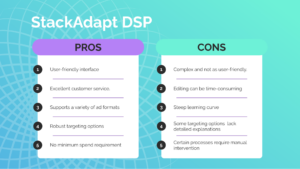
Best for: StackAdapt is best known for its capabilities in native advertising and building top-funnel audiences, and is particularly effective for brands seeking to engage users with native ads across a wide range of premium publishers. This makes it a good choice for brand awareness and early-stage customer acquisition campaigns.
Pros:
- User-friendly interface.
- Excellent customer service.
- Supports a variety of ad formats, including native, display, video, and CTV.
- Robust targeting options such as contextual, behavioral, and interest-based targeting.
- No minimum spend requirement.
Cons:
- Complex and not as user-friendly.
- Editing campaigns, particularly making bulk changes, can be cumbersome and time-consuming.
- Steep learning curve.
- Some targeting options and features lack detailed explanations or tooltips.
- Certain processes, like adding creatives and making mass edits, still require manual intervention.
Ways to increase coverage:
- Use StackAdapt’s advanced targeting options.
- Incorporate a mix of native, display, video, and CTV ads.
- Allocate a higher budget.
- Create lookalike audiences.
- Implement cross-channel campaigns.
6. Adobe Advertising Cloud DSP
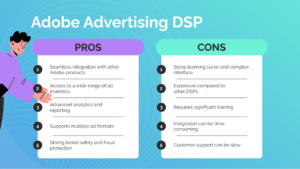
Best for: Adobe Advertising Cloud DSP is ideal for large-scale, multi-channel campaigns that benefit from deep analytics and integration with other Adobe tools. It’s particularly useful for campaigns requiring robust data analysis and optimization across various digital formats.
Pros:
- Seamless integration with other Adobe products.
- Access to a wide range of ad inventory, including premium publishers.
- Advanced analytics and reporting capabilities.
- Supports multiple ad formats (display, video, native, etc.).
- Strong brand safety and fraud protection measures.
Cons:
- Steep learning curve and complex interface.
- Expensive compared to other DSPs.
- Requires significant training for optimal use.
- Integration can be time-consuming.
- Customer support can be slow according to some reviewers.
Ways to increase coverage:
- Use cross-channel and cross-device targeting.
- Expand to premium inventory sources through private deals.
- Increase budget and use advanced bidding strategies.
- Leverage Adobe’s audience segmentation and data integration.
- Experiment with various ad formats and creative approaches.
7. Adform

Best for: Adform is best known for its comprehensive programmatic advertising capabilities, offering full-funnel strategies with extensive audience segmentation and dynamic ad placements.
It’s particularly effective for brands that require detailed control over their digital advertising campaigns, making it ideal for both branding and performance-based marketing.
Pros:
- Comprehensive reporting and analytics.
- Extensive targeting options.
- Independence from walled gardens.
- Full-funnel capabilities.
- Ease of integration.
Cons:
- Some users find the interface to be complex and challenging to navigate.
- Steep learning curve.
- Adform can be expensive, making it less accessible for smaller advertisers with limited budgets.
- Users have reported delays in customer support responses.
- Some users have experienced occasional performance issues, such as slower loading times and system glitches.
Ways to increase coverage:
- Use Adform’s unique audience segments.
- Implement dynamic creative optimization (DCO).
- Expand through programmatic guaranteed deals.
- Use Adform’s AI-driven algorithms.
- Integrate with Adform’s full-stack solutions.
- Use cross-device targeting.
- Optimize frequency capping.
8. Centro’s Basis DSP
Best for: Basis DSP is great for digital marketers and agencies looking for an easy-to-use, versatile platform that offers a comprehensive approach to programmatic advertising.
Advertisers love Basis because it’s built around the whole media planning pipeline, so it’s easy to create and organize IOs and RFPs to send to potential partners and vendors.
Additionally, the reporting integrates with Meta so that planners can monitor social spend alongside programmatic spend.
It’s particularly effective for running programmatic campaigns in the North American market, and is well-suited for both small and large campaigns with a focus on user acquisition and app installs.
Pros:
- Easy to use and learn.
- Access to a wide range of inventory, including private marketplace deals.
- Competitive pricing with low CPMs and CPAs.
- Excellent customer service and support, regularly offering webinars and training.
- Supports multiple creative types, including video, native, display, and audio.
Cons:
- Limited supply in Tier 2 countries, making it less effective for targeting European users.
- Interface design is outdated.
- Reporting tools need refinement for better client-facing outputs.
- Lack of cookie matching technology, leading to lower match rates between desktop and mobile.
- Performance features for retargeting and conversions are not as developed as some other DSPs.
Ways to increase coverage:
- Access Basis’s extensive private marketplace deals to access premium inventory and reach high-value audiences.
- Use the platform’s advanced targeting capabilities, such as geofencing and contextual targeting, to expand your reach within the North American market.
- Use cross-device targeting options to ensure consistent messaging across multiple devices.
- Use DCO to personalize ads in real-time.
- Participate in Basis’s regular webinars and training sessions.
9. Xandr Invest

Best for: Xandr Invest is good for media planners and advertisers looking to access premium video and CTV inventory through an intuitive deal discovery and activation platform. It is particularly suitable for comprehensive video campaigns and political advertising.
Pros:
- Access to premium video and CTV inventory.
- User-friendly interface for deal discovery and execution.
- Advanced targeting options.
- Integration with multiple SSPs and direct publisher relationships.
- Strong support and regular updates on new features.
Cons:
- Some users find the interface outdated and complex.
- Limited performance in terms of real-time bidding optimization.
- High costs associated with premium inventory deals.
- Slower customer support response times.
- Limited supply in non-premium, open exchange inventory.
Ways to increase coverage:
- Use Xandr’s Inventory Library to access and activate premium deals.
- Implement cross-device targeting.
- Increase budget allocation for high-demand inventory during peak advertising seasons.
- Implement advanced audience segmentation and contextual targeting.
- Regularly update and optimize creative assets for better engagement and visibility.
What’s the Best DSP for Your Campaign?
So, there you have it — nine of the most popular DSP platforms with their pros, cons, and ways to increase coverage.
But you might still be wondering which DSP is best for your campaign — some are better for certain types of campaigns, others for specific geographic coverage, and others are suitable for smaller budgets. So how do you choose?
That’s where Grapeseed Media comes in.
Because our approach is platform-agnostic, we’re not tied to a specific DSP and can help you find the most suitable platform for your needs.
Jump on a call with our team of programmatic experts, and let’s figure it out together.




